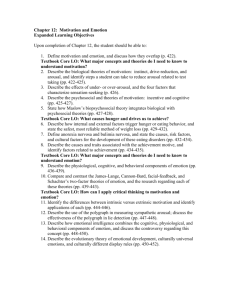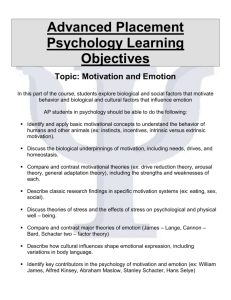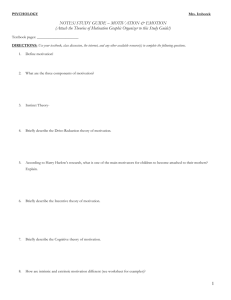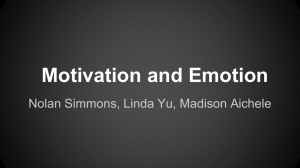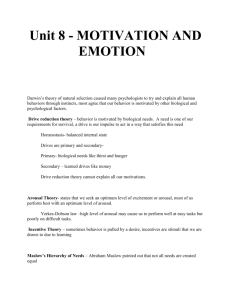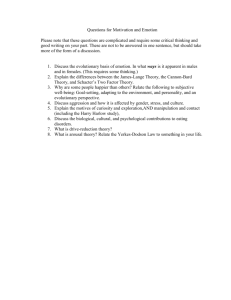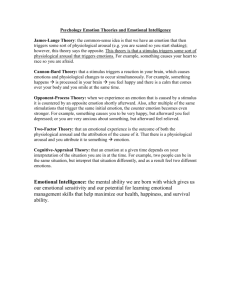Chapter 11 Review
advertisement
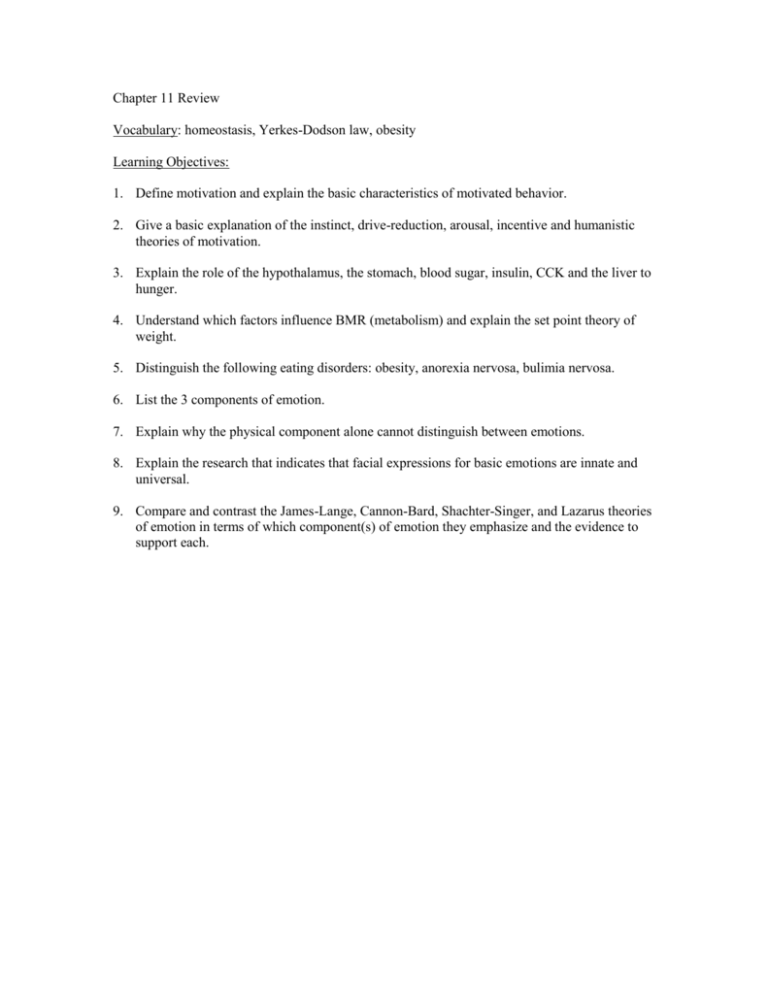
Chapter 11 Review Vocabulary: homeostasis, Yerkes-Dodson law, obesity Learning Objectives: 1. Define motivation and explain the basic characteristics of motivated behavior. 2. Give a basic explanation of the instinct, drive-reduction, arousal, incentive and humanistic theories of motivation. 3. Explain the role of the hypothalamus, the stomach, blood sugar, insulin, CCK and the liver to hunger. 4. Understand which factors influence BMR (metabolism) and explain the set point theory of weight. 5. Distinguish the following eating disorders: obesity, anorexia nervosa, bulimia nervosa. 6. List the 3 components of emotion. 7. Explain why the physical component alone cannot distinguish between emotions. 8. Explain the research that indicates that facial expressions for basic emotions are innate and universal. 9. Compare and contrast the James-Lange, Cannon-Bard, Shachter-Singer, and Lazarus theories of emotion in terms of which component(s) of emotion they emphasize and the evidence to support each. Ch 11 Motivation and Emotion Theories Statement Theory I believe that emotion results from how we perceive physical arousal. To me, physical arousal is necessary to the subjective experience of an emotion. I do not think that high level cognition affects our emotional experiences. Research has not been consistent with my beliefs (sniff sniff..) I believe that behavior is motivated by the desire to reduce internal tension caused by unmet biological needs that push us to behave in certain ways. I emphasize the importance of psychological and cognitive components in human motivation and believe that we are innately driven to strive for a positive self-concept and the realization of our personal potential (self-actualization). Although I do not think that the experience of emotion is directly caused by physical arousal, I agree that high level cognitive functions are not part of emotion. My particular theory states that the stimulus (be that a snake, a comedian or Brad Pitt) directly causes both a physical reaction and the perception of emotion. My theory is not in your text, so check the video handout. I take my lead from Charles Darwin, and although my ideas may not be popular today, I strongly believe that we are motivated to engage in certain behaviors because of genetic programming. My theory of emotion is quite simple. What I have to say is that the thing of vital importance to emotion is our higher level cognitive appraisal of emotion-causing stimuli. We do what we do because of the pull of external goals, such as rewards. I think that learning theorists have it right when they say reinforcement is a key factor in motivation. How do we explain curiosity and exploratory behavior? I believe that we are motivated to maintain an optimal level of arousal. When arousal is too low, we try to increase it by seeking out stimulating experiences; when it is too high, we seek to reduce arousal in a less stimulating environment. My theory of emotion starts with physical arousal. I believe that the important aspect of determining what emotion you feel is the cognitive appraisal of the situation that allows us to apply a label to that physical arousal. Theories: Instinct Theories, Drive theories, Incentive theories, Humanistic theories, Arousal theories, James-Lange theory, Cannon-Bard theory, Two-Factor theory, Cognitive-Mediational theory
